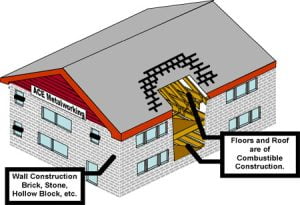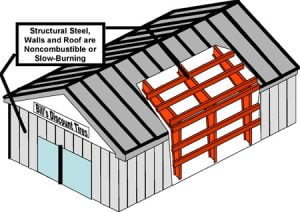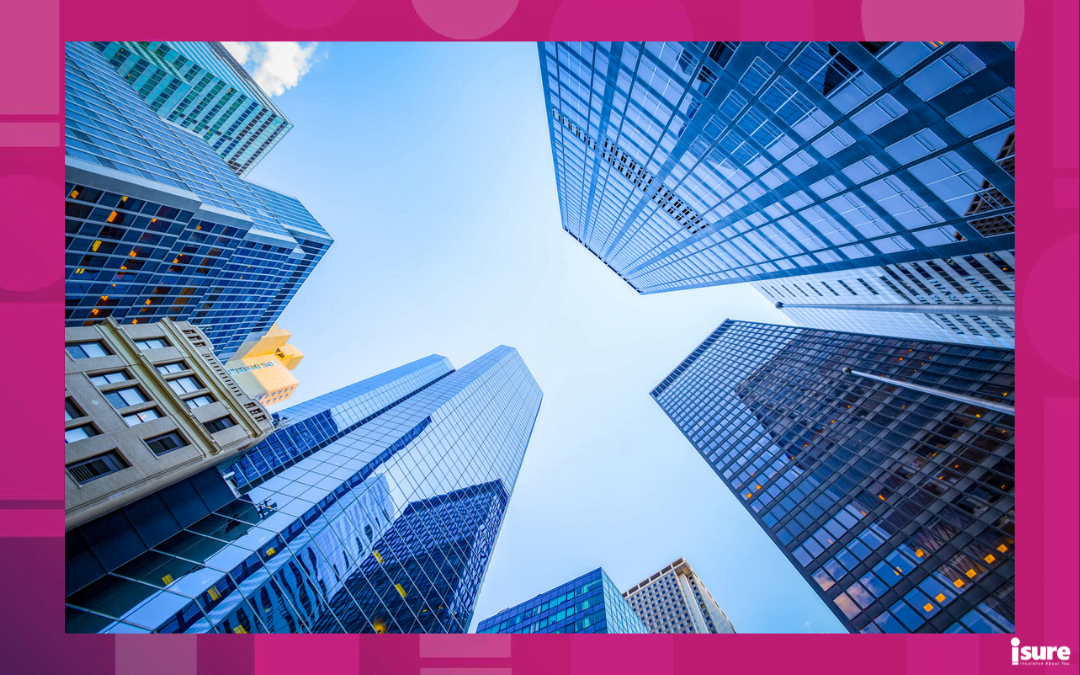When it comes to creating a property insurance policy, many things are taken into consideration. The location of the property and the age of the house are all underlying factors. However, one factor that many people aren’t aware of is the construction class in which the property falls under. What are the materials? What percentage of the structure consists of said materials? If the building is exposed to fire, how much will be damaged? These are all taken into consideration when determining the risk your property or building is at. When you figure out the construction class a building falls under, you can better understand the risk of your building.
How many building construction classes are there?
There are six different types of building construction classes. Each one will influence the building’s purpose and effects many other aspects, such as:
- Proximity to other structures
- Height of the building
- Occupant load of building
- Number of windows
- Fire resistance
- Whether or not the building will need sprinklers
The different classifications are important determinants for building owners, builders, and insurance underwriters to understand. Each class is given a fire-resistance rating. This is defined as the time, in minutes, that an assembly of materials will withstand both heat and flames in the event of a fire.
In order to figure out what type of construction class you need, we must first figure out what the six classes are:
Class 1: Frame
The first class consists of buildings where the entire exterior walls are wood or other combustible materials. This includes construction where combustible materials are generally used in combination with other materials. This includes brick veneer, stone veneer, wood iron-clad and stucco. Frame buildings will usually have roofs, floors and supports made of combustible materials, as well.

Photo via verisk.com
Class 2: Jointed Masonry
This next construction class is categorized by buildings with exterior walls made of masonry with fire-resistant construction techniques. Some examples of masonry materials include concrete blocks, stone, tile, or similar materials. This is usually paired with combustible materials to make up the floors and roof of the building. Generally, the ground floor is not made up of combustible material. This construction class is rated for not less than a one-hour burn time.

Photo via verisk.com
Class 3: Noncombustible
The third class is quite self-explanatory. The noncombustible class is when the floors, exterior walls, and roof are constructed entirely of metal, asbestos, gypsum, or other noncombustible materials. This can also mean that the building is made up of slow-burning materials.

Photo via verisk.com

Class 4: Masonry Non-Combustible
Class 4 consists of buildings where the exterior walls are built entirely of masonry materials. As mentioned above, this includes metal, asbestos, gypsum, or other noncombustible materials. The difference between this class and Class 3 is that the roof and floor are also made of metal or other non-combustible masonry materials. Generally, the walls will not be less than four inches. Regardless of the type of insulation in the roof’s surface, the floors and roof(s) will be non-combustible or slow-burning. This class generally has a fire-resistive rating of not less than one hour.

Class 5: Modified Fire Resistive
In this case, the exterior bearing walls must be created using noncombustible materials or materials of masonry. On the other hand, the exterior nonbearing walls and panels are constructed using slow-burning, combustible materials that are not fire-resistant. Generally, these buildings also include structural steel protection techniques. This is when fire-protection materials are applied to steel, such as brick, gypsum block, concrete, plaster, or clay tiles.

Class 6: Fire Resistive
The final class is when a building is created to be almost entirely fire-resistant. The walls of the building are created using solid masonry and reinforced concrete that is not less than four inches thick. On top of this, horizontal and vertical load-bearing protected metal supports are put throughout the building. The exterior bearing walls must be of noncombustible materials or masonry. Overall, the building has a two-hour fire resistance rating. However, exterior nonbearing walls and panels may be slow-burning, combustible, or with no fire resistance rating.
Which construction class should my building be?
Generally, you work with your construction manager and building manager to decide which type of construction class you will need. There are many factors that play a role in what type of class you should use, so much thought should be put into it. If you have recently purchased a building, figuring out the class your building represents is crucial. It is important to reach out to your insurance provider to discuss options and price points when it comes to the premiums of your new building. Are you in the market for new insurance? If so, why not check out isure? We have some of the best premiums in the province as well as customer service that is always there for you when you need it most. Contact us or request a quote today!




